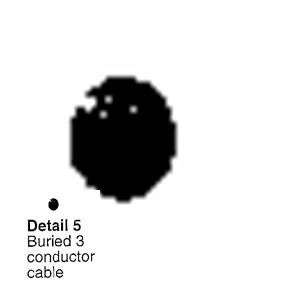Re: Re: UG Conduits Separation NEC recommended Distance
NEC has no recommended separation distances for HV, MV, LV and communication/control conduits in UG duct banks. Industry standards (IEEE 518 "Guide to Minimize Noise Inputs to Controllers...") suggested different separation distances based on the voltage level and installation method: 12" between MV & control in rigid steel conduit, 84" between cables in air, 26" between steel cable trays, etc.
Experience has shown that these separations are very conservative. IEEE 518 has been withdrawn for various reasons, so there is not an industry standard or guide that recommends separation.
IMO keep the LV control and communications in RGS conduit or run them in armored cable. Keep at least 12" separation between high current power cables and control cables. We always use different duct bank and manhole systems for MV cable (4.16 kV and up) and 600 V and control/communications systems and combine them only when absolutely necessary. We just don't like having a 15 kV cable in the same manhole with telephone and lighting circuits, even when cable spacing is maintained and controlled by lashing them on racks (racking) and the HV cables are covered with fireproofing tape.


